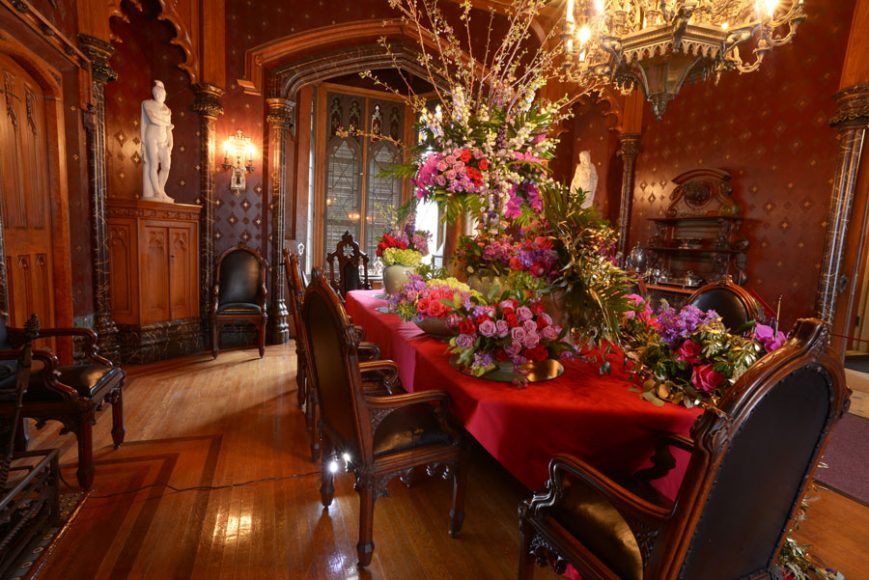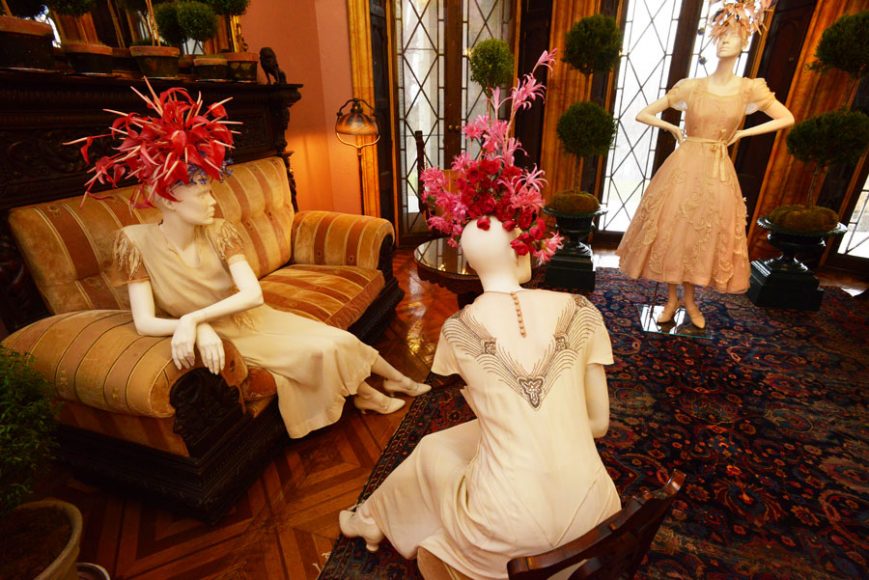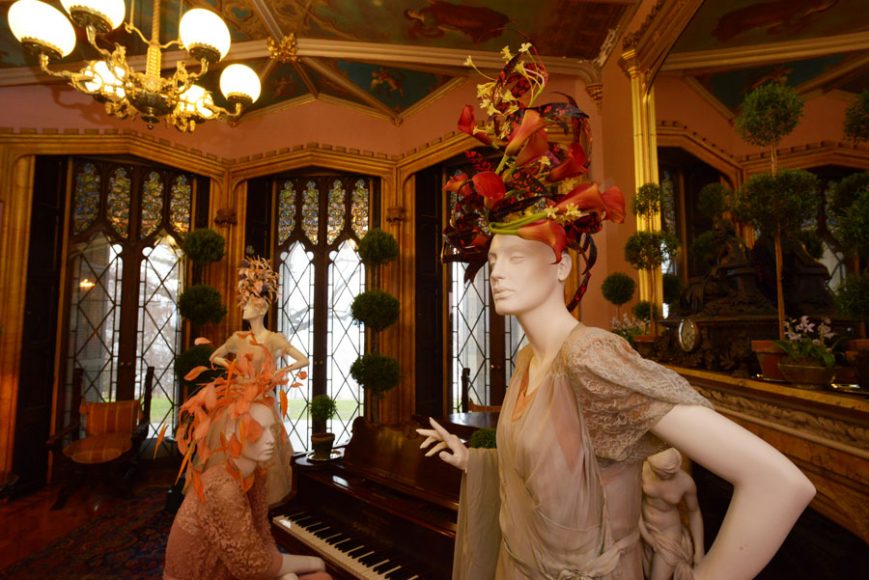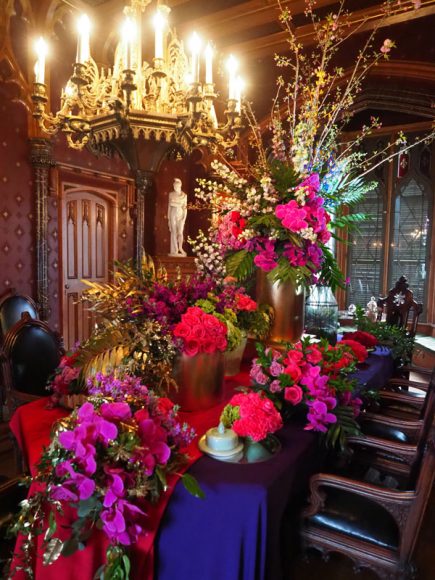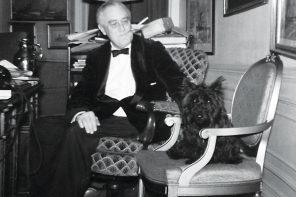The willowy female figures were languishing in the reception room of the hillside mansion above the Hudson River on a dreary, early April evening.
Their period clothing was as monochromatic as their porcelain complexions. But that all changed in a flourish.
Joshua Werber rushed in from a tortuous drive from Brooklyn and placed a colorful floral headpiece on one and then another, until all the mannequins were adorned with his unique art.
After some readjusting, Werber was done and in so doing the annual Lyndhurst Flower Show was complete with decoration.
Werber said his work “draws from the natural world and is an exploration of emotion through the act of creation.” He was recently featured in The New York Times Style section as well as in Vogue magazine.
Now in its third year, Werber’s #FloralTeteATete project began as an Instagram challenge to design “exciting and structural flower crowns, hats and headpieces.” He said his work is “driven by a desire to create unique environments through which the participant can experience transformation.”
And that’s exactly what he accomplished at the Lyndhurst mansion in Tarrytown.
Florists and Lyndhurst supporters Ned Kelly of Ned Kelly & Co. and Gerald Palumbo of Seasons On the Hudson are credited with the creation of the show.
Kelly again had the front of the house as he did a year earlier. This year it was to be the flower of springtime, tulips, he pronounced. Reds, whites and purples, “which of course is pretty royal,” he said, rightfully befitting the Gothic Revival mansion that was once home to New York City Mayor William Paulding, merchant George Merritt and railroad tycoon Jay Gould and his wife, Helen.
Flower show co-founder Palumbo took time from setting up the outdoor pop-up garden shop to take in the scene.
Speaking on behalf of Kelly, he said, “It was our vision from the beginning to let people feel, to be able to have that feeling of stepping back into time to experience the Gilded Age.”
The mansion is more fortress in appearance than homelike, but Palumbo assured that it was anything but when the owner brightened it with flowers.
“Jay Gould was a famous collector of orchids. He traveled around the world,” seeking them out. His home would have been filled with flowers “and you can imagine what it looked like,” Palumbo said.
“Our goal was to give you that sense of what it would be like to be at a party with the Goulds in its heyday. They were famous to share their house with their neighbors. They opened their grounds.” And, “They offered …. a sense of community,” Kelly added.
And on this cold, rainy night, the community was out in force coming through the front door to “ooh” and “ahh” at 20 rooms, hallways and stairwells filled with tulips, roses and orchids, as well as a three-story-long tapestry and a colorful window shade.
Howard Zar, executive director of Lyndhurst, looked happy moving among the home’s visitors. He extolled the artistry of Whitney Crutchfield and her weaving of flower and fabric in the window of the sitting room on the second floor; the terrariums of Paula Hayes in the cabinet room — “they were shown in MoMA,” he said — and Portia Munson’s flowing tapestry.
“All Hudson Valley artists, doing major things that we were able to bring here,” he said. “Everybody can find something unique here at the show.”
With money being raised and the warm-weather seasons ahead, Zar will next turn his attention to outside endeavors.
With its expansive grounds (67 acres), and near isolation from the rest of the world, Lyndhurst served as Gould’s country retreat, a place to escape the pressures of running the New York Elevated Railway, the Union Pacific Railroad and Western Union Telegraph.
When he was stricken with tuberculosis, Lyndhurst remained his oasis until he died in 1892.
It was then that eldest daughter, Helen, began overseeing the property. She had craftsmen build a bowling pavilion and recreation center in 1894 down by the river. The building included space for a sewing school that taught local women a trade.
What Zar now has planned for the grounds is to create a cement pathway — complete with shaded rockeries — from the house to the bowling alley. Working from archival photographs, he said, “We know exactly where the path goes.”
“The footprints of the old rockeries still can be identified on the property but were not maintained over time and were partially removed,” said Maura Bekelja, a spokeswoman for Lyndhurst. “So, while it is a restoration to their historic appearance, much will be recreated and in this case will be done with consideration for ADA (Americans with Disabilities Act) concerns as well.”
A fountain by artist Frederick William MacMonnies called “Boy and Duck,” a gift to Lyndhurst, will be placed in a seating area that held a similar bronze fountain by the sculptor. “Boy and Duck” was originally designed in 1895 for Prospect Park in Brooklyn.
As for the work ahead at historic Lyndhurst, “There’s a lot of landscaping — a decade of landscaping — ahead of us,” Zar said.
For more, visit Lyndhurst.org.

